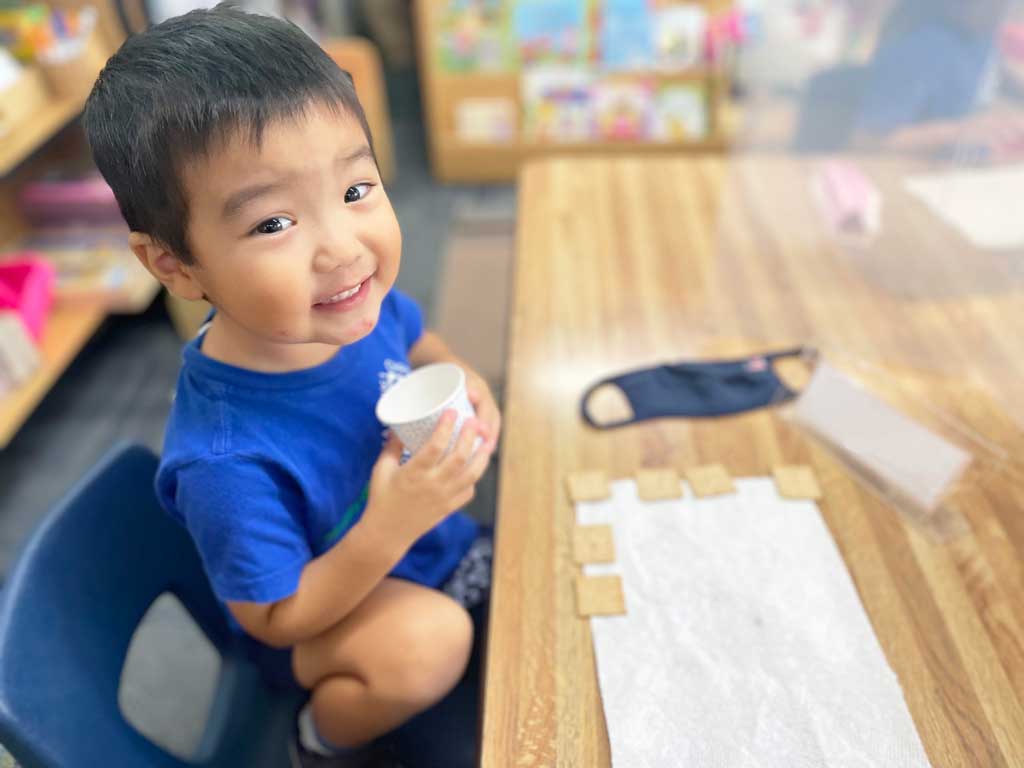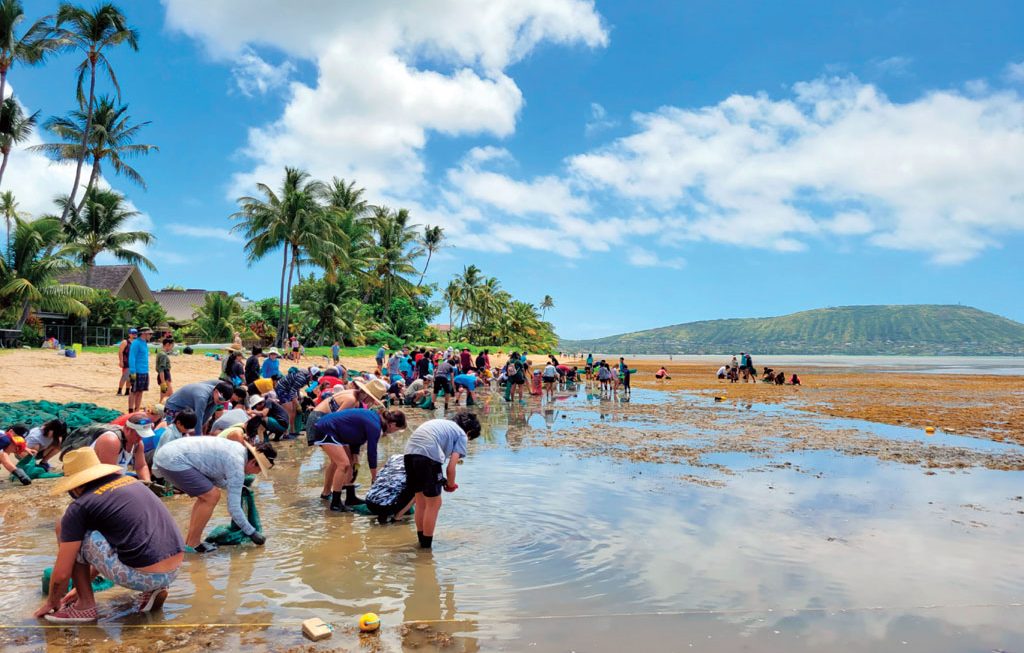by Stephanie Lopes
A group of two-year-old students walk out to Kaimuki Christian School’s outdoor play area to stare up at the sky. Quickly their faces fill with excitement and awe as birds begin to fly above their heads. They point upwards. “Two big birds!” shouts one student. “A red bird!” exclaims another student.
After ample time to observe and discuss the birds, their teacher leads them back to the classroom, nurturing the students’ interests in birds by printing out Hawaii bird pictures from the Internet to make albums. She then encourages interested students to name the birds in the pictures, to inquire further through other books, and to draw bird pictures.
This free play activity is typical in Ms. Mei Chun and Ms. Gene Generoso’s two-year-old preschool classes at Kaimuki Christian School. Unlike a structured lesson with teacher-led goals, ‘free play’ offers a safe environment where students have opportunities to choose their own interests by exploring and discovering the environments around them.
With over 20 years of experience each, Ms. Mei and Ms. Gene have witnessed the many benefits of free play for a child’s development.
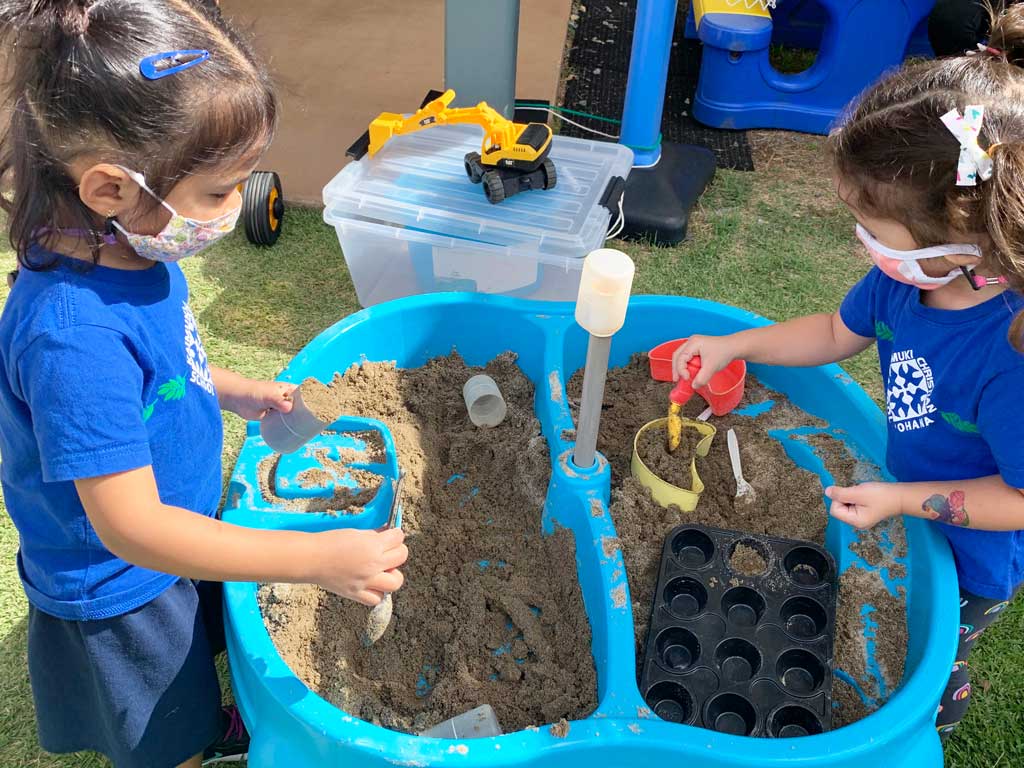
Make good choices. “In free play, we facilitate learning by observing the children’s interests. With my knowledge in early childhood education, I then plan purposeful play for them,” explains Ms. Gene.
“At Kaimuki Christian we offer children many different options for play through various resources and materials,” continues Ms. Gene. “In the classroom, we have stations: a pretend/dress up area, a block center with cars and trainsets, a messy area with water and paints, a drawing/writing area, a discovery area, and a quiet area to read books or to play independently. Outside we have different stations too: a running/jumping area, a slide and stepping stones, an inclined tube for dropping things, a water table and tower to practice pouring/scooping, a sand table, and a tunnel that folds for crawling. Students choose what they want to explore.”
“Children will need to learn to make their own choices in the world, and free play safely empowers them to make different choices,” expounds Ms. Mei.
Experience something new. “Free play offers opportunities for children to safely take risks, like when they choose to go down the steep slide for the first time,” says Ms. Mei. “Even for art, I give them the opportunity to create how they want. It is fine for them to use the brushes or to use their hands or arms.”
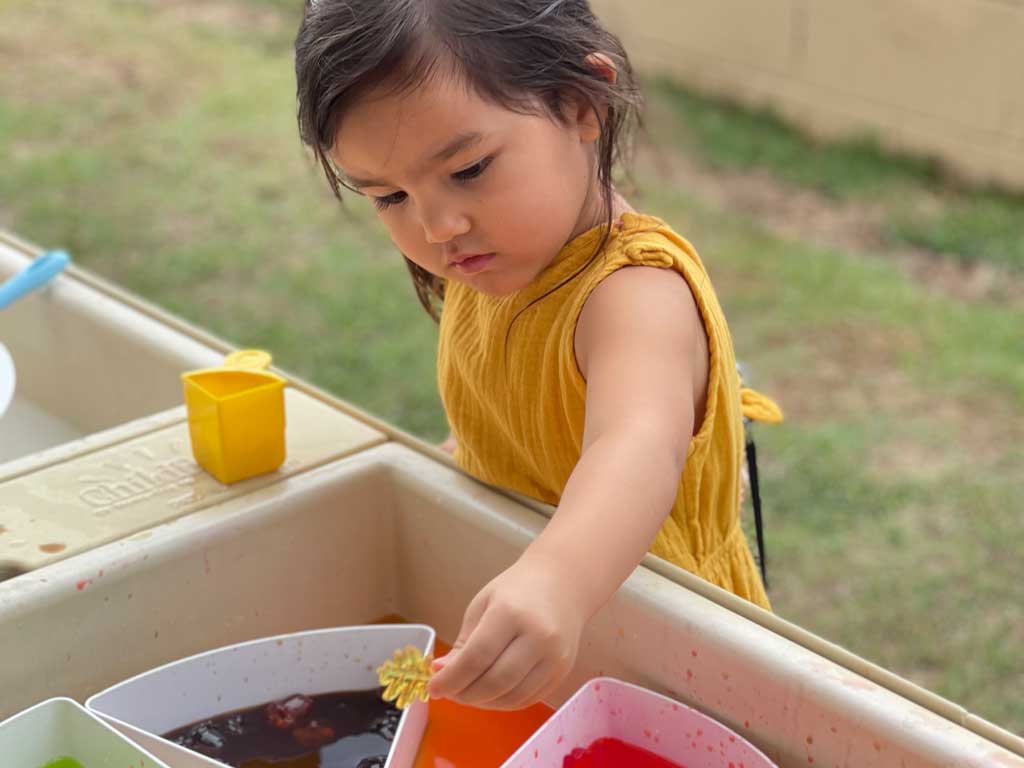
Nurture creativity and imagination. “In free play, children create their own world. They might pretend they are mommy or daddy or the teacher. Or one child might be the doctor, and another is the patient. This is how they process the world around them,” explains Ms. Mei.
Promote language. During free play, children experience a range of items, often inquiring to identify what they see. “When I am drinking my hot tea, I blow it and the steam goes on my glasses. When the children notice, they ask me questions, and I give them the vocabulary words. ‘Steam is hot,’” explains Ms. Mei.
“I often say to the children, ‘Let’s hydrate and drink some more water.’ They will then say that sentence when they are pretending,” Ms. Gene recounts.
Learn academic lessons. “We learn shapes, colors and more from play,” details Ms. Mei. “For example, we build castles with different colors and shapes, and then I ask, ‘Who can tell me what shape this is? Is this red or yellow?’
Free play is ongoing, hands-on learning that is also individualized to each child. I do not say, ‘Today we are going to learn about squares.’ Instead we consistently identify squares through many activities.”
Build social and problem-solving skills. “A child may want to play with the toys another child is playing with, but they need to learn to wait and share. We often allow children to play together on their own, while watching them on the side. We want them to solve their own problems but if conflict starts to arise, we intervene. We help them so they feel empowered to navigate the social situation on their own next time,” explains Ms. Mei.
Love school. “At school, I tell children I am their friend, and we develop a trusting and loving relationship through fun free play activities,” says Me. Mei. “We want children to be safe and happy at school. The children like choosing what to do and seem more engaged. At a young age, we want them to learn that school is a fun place where they will be loved.”
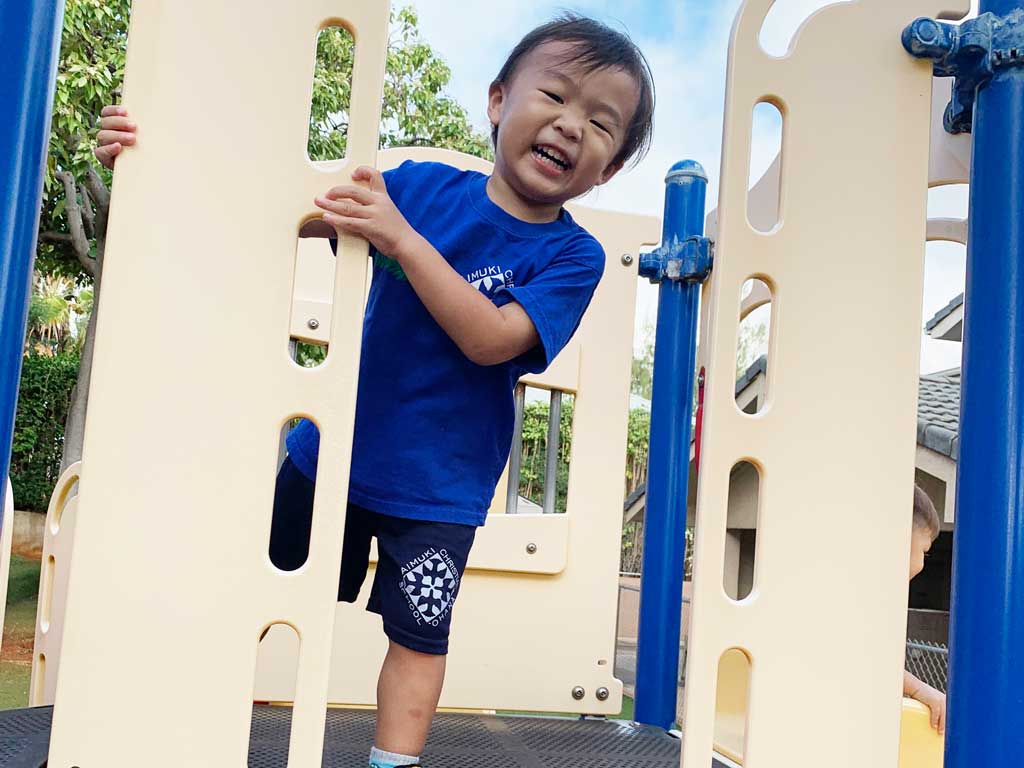
Free Play Activities at Home
Parents can help to promote free play at home, and this can start with a routine. “Routines make children feel safe and also give them something to look forward to,” explains Ms. Gene. “When we wake up, we clean up, have breakfast, and then we will have some sort of free play activity until lunch.”
“The best free play activities are done in a safe space and also integrate your child’s interests,” advises Ms. Gene. “As children get older, they can discuss what happened and the learning lessons.”
Here are some home free play ideas, courtesy of Ms. Mei and Ms. Gene:
- A tray of ice. Give children a tray of ice and take it outside. They can experiment with it, using their senses and learning science, such as freezing and melting.
- Water. Fill a pan and put plastic toys and ladles inside. Children can explore pouring, scooping, and transferring.
- Straw and tissue paper. Race across an area by blowing tissue paper, a paper plate, or cotton balls with a straw.
- Pots and pans. Children do not always need toys, but they can simply use utensils and pots and pans to create their own drums and musical beats.
- Different recipes. Sensory activation is important for young children, like tasting, touching, and smelling. With cooking, they can apply all these senses and also see the transformation of foods, which are science principles. Make cookies, a peanut butter and jelly sandwich with picture instructions, or simply peel an orange.
- Role play. If there isn’t another child in the house, a parent can be the friend. Pretend you are at the store, the doctor’s office, school, or elsewhere.
- Journal. Give crayons, markers, and paper, and let your child create a story of pictures or words.
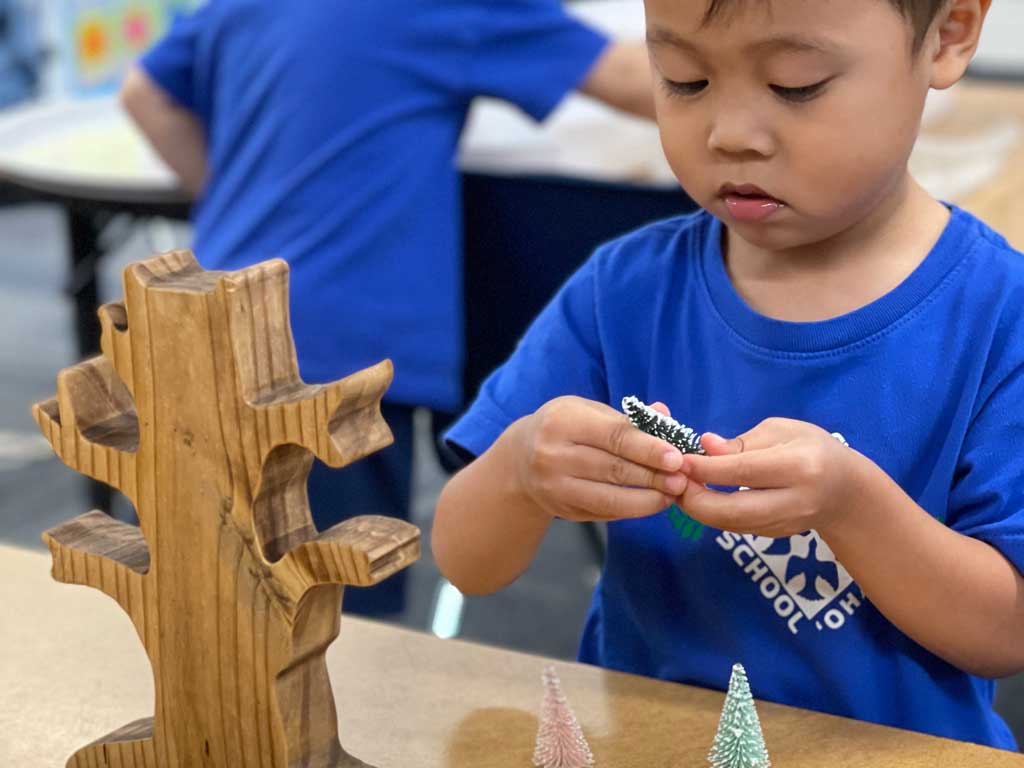
“I want to encourage parents to give their children ample time to freely play,” concludes Ms. Gene. “Play is very critical for child development, and it is how children learn. Don’t underestimate the power of play for young children.”


